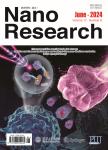Elucidating the dynamics of polymer transport through nanopores using asymmetric salt concentrations
作者机构:Department of PhysicsUniversity of OttawaOttawaON K1N 6N5Canada
出 版 物:《Nano Research》 (纳米研究(英文版))
年 卷 期:2022年第15卷第11期
页 面:9943-9953页
核心收录:
学科分类:0808[工学-电气工程] 081704[工学-应用化学] 0809[工学-电子科学与技术(可授工学、理学学位)] 07[理学] 08[工学] 0817[工学-化学工程与技术] 070305[理学-高分子化学与物理] 080501[工学-材料物理与化学] 0805[工学-材料科学与工程(可授工学、理学学位)] 0703[理学-化学] 0702[理学-物理学]
基 金:the support of the Natural Sciences and Engineering Research Council of Canada(NSERC) through funding from No.CRDPJ 530554-18
主 题:nanopore DNA translocation salt gradient tension propagation polymer transport
摘 要:While notable progress has been made in recent years both experimentally and theoretically in understanding the highly complex dynamics of polymer capture and transport through nanopores,there remains significant disagreement between experimental observation and theoretical prediction that needs to be *** salt concentrations,where the concentrations of ions on each side of the membrane are different,can be used to enhance capture rates and prolong translocation times of electrophoretically driven polymers translocating through a nanopore from the low salt concentration reservoir,which are both attractive features for single-molecule ***,since asymmetric salt concentrations affect the electrophoretic pull inside and outside the pore differently,it also offers a useful control parameter to elucidate the otherwise inseparable physics of the capture and translocation *** this work,we attempt to paint a complete picture of the dynamics of polymer capture and translocation in both symmetric and asymmetric salt concentration conditions by reporting the dependence of multiple translocation metrics on voltage,polymer length,and salt concentration *** asymmetric salt concentration conditions,we experimentally observe the predictions of tension propagation theory,and infer the significant impact of the electric field outside the pore in capturing polymers and in altering polymer conformations prior to translocation.



